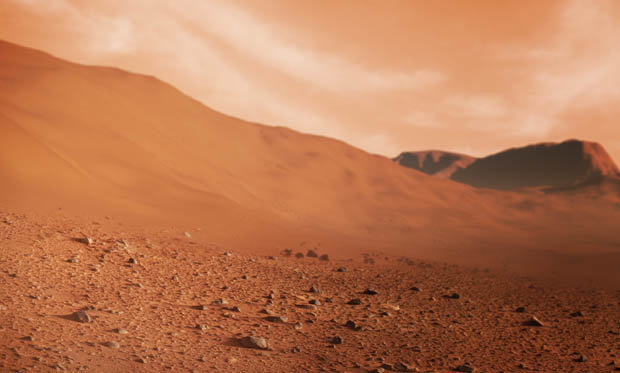The Atacama Desert, which spans parts of Chile and Peru, is the driest non-polar desert on Earth and may contain the environment most like that of the Red Planet.
The Atacama Desert is the driest place on Earth, and while some life may exist in parts of it, there are big areas that, up until now, were thought to be completely devoid of any. Some small bacteria had been discovered periodically, but it was hard to tell whether these microscopic creatures had simply blown in from another part of the desert, or whether they were actually likely to survive there long-term.
Now, a new study has found that, yes, micro-organisms have set up permanent residence in the most ostensibly dead parts of the Atacama Desert. These mini creatures appear to go dormant for decades or even centuries at a time, awaiting the very rare occasions when the desert sees rain, when they multiply quickly to take advantage of the moisture before returning to their dormant state.
Washington State University planetary scientist Dirk Schulze-Makuch is pretty ecstatic about the finding, throwing around Jurassic Park references and eagerly considering the implications for study of the Red Planet. He said the following in a press release:
“It has always fascinated me to go to the places where people don’t think anything could possibly survive and discover that life has somehow found a way to make it work. Jurassic Park references aside, our research tell us that if life can persist in Earth’s driest environment there is a good chance it could be hanging in there on Mars in a similar fashion.
“We know there is water frozen in the Martian soil and recent research strongly suggests nightly snowfalls and other increased moisture events near the surface. If life ever evolved on Mars, our research suggests it could have found a subsurface niche beneath today’s severely hyper-arid surface.”
As excited as Schulze-Makuch may be, it’s still a big leap of logic to suggest that simply because bacteria exist in the Atacama Desert, similar creatures might exist on Mars. While the soil of the Atacama Desert is often described as being similar to that on Mars, the Red Planet’s environment is still far more harsh than anything found on Earth.
What’s more, life didn’t start in the Atacama Desert, even if it’s evolved to fit a niche within this harsh climate. While Martian bacteria could have first began back during the planet’s warmer, wetter phase, we haven’t yet found any evidence that this was the case.
There is hope, though, and perhaps that is enough for now to keep the search for Martian life forms moving. This does seem to lend credence to the theory that Mars’ life forms may all exist underground, where things could be a lot cozier than on the surface.
For now, we have no way of knowing if there’s any alien life on Mars. In the meantime, it’s fun to know that creatures could very well survive on the Red Planet under the right circumstances, if they got very, very lucky.















